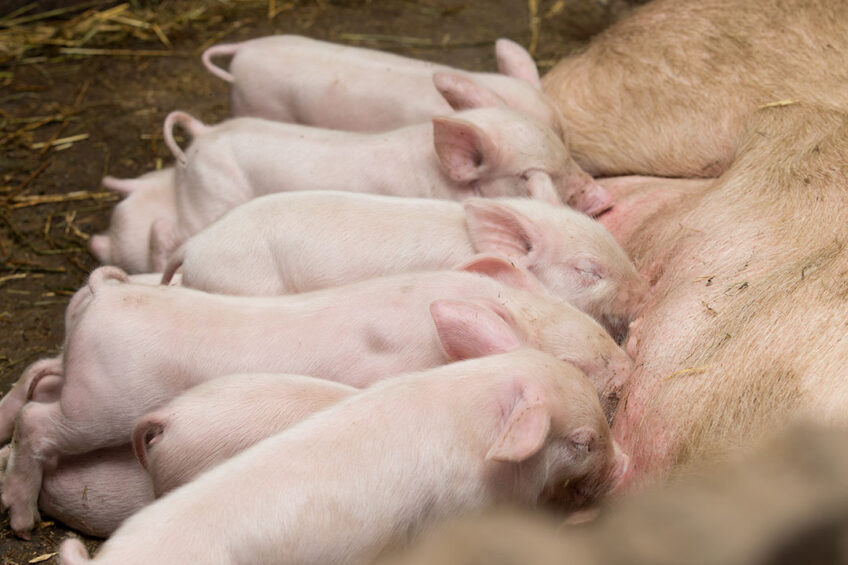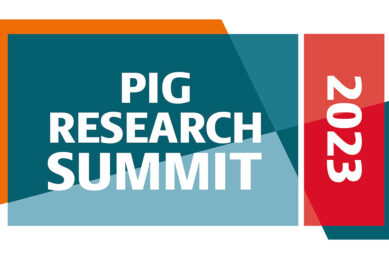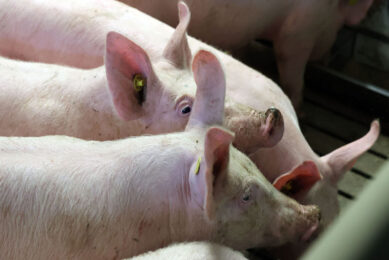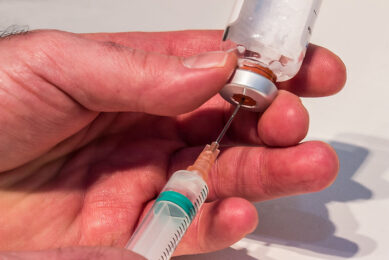A total feed approach to support piglets

Feeding young piglets starts with the sow and is then followed by 2 crucial weeks; the week after birth and the week after weaning. A multi-faceted approach can positively impact piglet growth, immunity, and ultimately profitability.
Shortly after birth the young piglet’s relative growth is extensive compared to the later phases of life. With an increasing number of high prolific sows in production globally as well as increases in genetic growth potential for swine in general, today more than ever there is pressure on producers to optimise piglet development.
The first weeks outside of the uterus are critical, but piglet growth begins when the nutritional flow is shared from its mother in utero. The only nutritional influence during this first stage of life is through sow feeding. The piglet and sow are connected for 115 days during gestation, so it is logical to think that a healthy sow is more likely to give birth to healthy piglets.
During the last few weeks of gestation, the foetus grows exponentially. This requires a lot of protein and energy from the sow, which comes from her own nutritional intake. Therefore, extra nutritional support is needed for a successful last trimester and also directly following the birth process. Research shows that this additional nutrition is key to giving the piglet the very best start in life.
The critical weeks
There are 2 crucial weeks in a piglet’s life: the week after birth and the week after weaning.
After birth, the intake of the essential immune boosters, energy, and fluid from colostrum from the sow is vital. A few hours after birth, the piglet’s intestinal microbiota composition starts to evolve, so nutritional influence on an intestinal level as early as possible after birth can be a game changer.
The week after weaning, the established balance in the piglet’s intestines is abruptly disturbed by changes in its diet and its environment. This time requires precision feeding with balanced nutrition to maintain health and improve efficiency to prevent challenges like low feed intake, incidence of diarrhoea, reduced growth and non-uniform growth.
More and more trials are being done to clarify the importance of early nutrition from gestation to post-birth and the first weeks post-weaning because the piglet needs to deliver economic profit after slaughter. Deep knowledge on gut microbiota composition, diversity and its activity are needed to grow healthy animals for sustainable food. But do we know enough about the development of the gastro-intestinal tract and its activity throughout a piglet’s life to truly optimise gut health and function?
One digestive tract, multiple causes and solutions
What is gut health? This is a question that can be answered in many ways; it is the faecal score, the appearance of the piglets in the pen, the use of pharmaceuticals or the measured biomarkers in saliva, urine and/or faeces. These are just a few of the quantitative and qualitative measurements that can help producers, veterinarians, and the wider industry better understand the growth, development and activity of the digestive tract. However, there are 3 important key functions of the gut that are common in all pigs:
- nutrient digestion to live, grow and survive;
- barrier function to protect and feed the host, and
- the signal to communicate from the gut to the brain.
There is not a single approach to optimise these key functions. Besides management, genetics and health challenges, one of the most important route of influence is through nutrition.
Solutions through nutrition
Before building any nutrition plan for young piglets it is important to determine the situation at the farm: what is the goal of the end feed, the phase of the piglet’s life and its health status, and what are the economical constraints of the farm. These considerations vary, which is why there is no one solution to fit every farm.
There are 4 fundamental pillars that need to be thought through in nutrition:
- Foundation – if there is no base, there’s no room to grow.
- Structure – size and form matters.
- Reinforcement – your plan is only as strong as the weakest link.
- Precision – it is all in the details.
Novus International has in its portfolio products that fit all 4 pillars as contributors to the balanced, necessary nutrition the piglet needs.
Methionine is part of the foundation of any nutrition programme. Alimet feed supplement is a liquid methionine source able to fulfil the amino acid supply as part of protein nutrition. Comprised of methionine hydroxy analogue (HMTBa), this feed additive has a unique molecular structure shown to have beneficial effects not only as an amino acid but also as an organic acid source in the diet.
Regarding the structure of the diet, Mintrex chelated trace minerals should be the new standard in young animal mineral nutrition.
Gut development, activity, and immunity are influenced by essential trace minerals so providing a highly absorbable mineral source is key. Bis-chelates, like those in Mintrex, bind the mineral – zinc, copper or manganese – with HMTBa creating a neutral molecule that is less likely to interact with antagonists in the gut.
This neutrality allows for stability throughout the intestinal tract so that the mineral can be delivered to the appropriate site of absorption and be more efficiently used by the animal.
To help reinforce the gastrointestinal tract in young piglets there’s also Provenia feed additive, a unique protected benzoic acid. With the well demonstrated antibacterial effect that benzoic acid provides in the stomach, it is now possible to prolong this effect far into the intestinal tract in this coated form. Through slow, controlled release of the active free benzoic acid, microbial load and activity can be optimised for nutrient digestion.
Finally, precision. With the protease from the Cibenza feed additive line the piglet gut can be supported by freeing up the hidden nutrients and cleaning the anti-nutritional factors. With this protease, trials have shown improved protein digestibility of less digestible protein sources. This heat-stable product can also break down anti-nutritional factors in the raw materials in the diet. Both actions reduce the negative load going into the digestive process, making more energy available for other purposes and increasing growth efficiency.
Multi-faceted approach
Feeding young piglets starts with the sow and is followed in importance by 2 critical weeks: the week after birth and the week after weaning. For the specific piglet gut health solutions, focus is needed on the nutrient, barrier and signal functions of the intestinal tract. A multi-faceted approach like that described above can positively impact piglet growth, immunity, and ultimately profitability so long as it includes the appropriate additives, fed to the sow at the optimal times.
Sponsored content
 Beheer
Beheer





 WP Admin
WP Admin  Bewerk bericht
Bewerk bericht